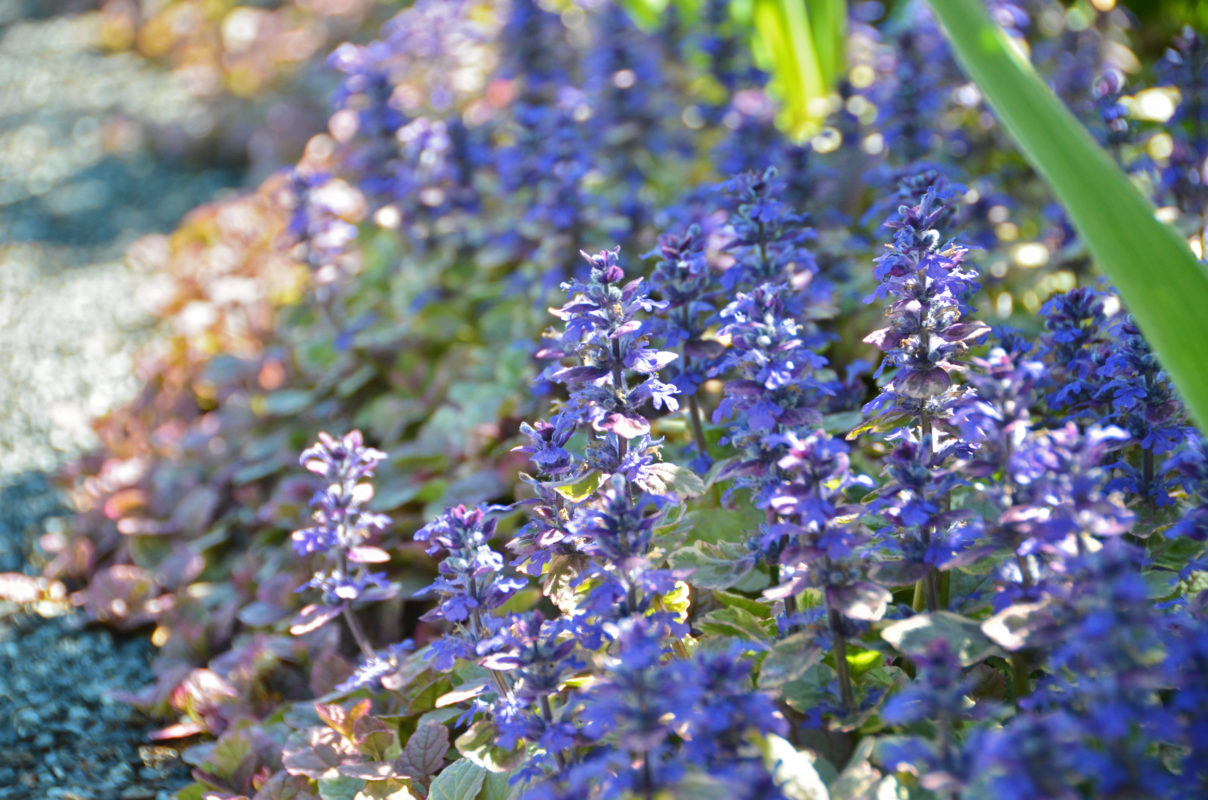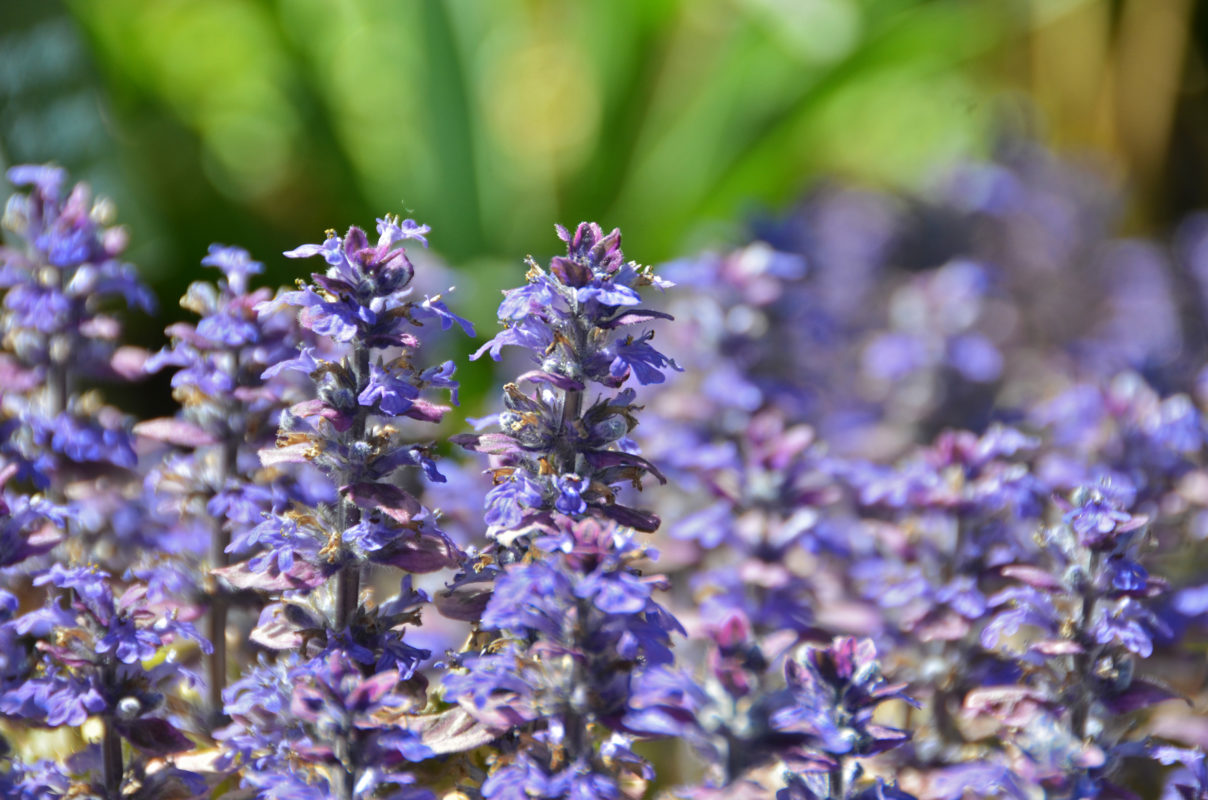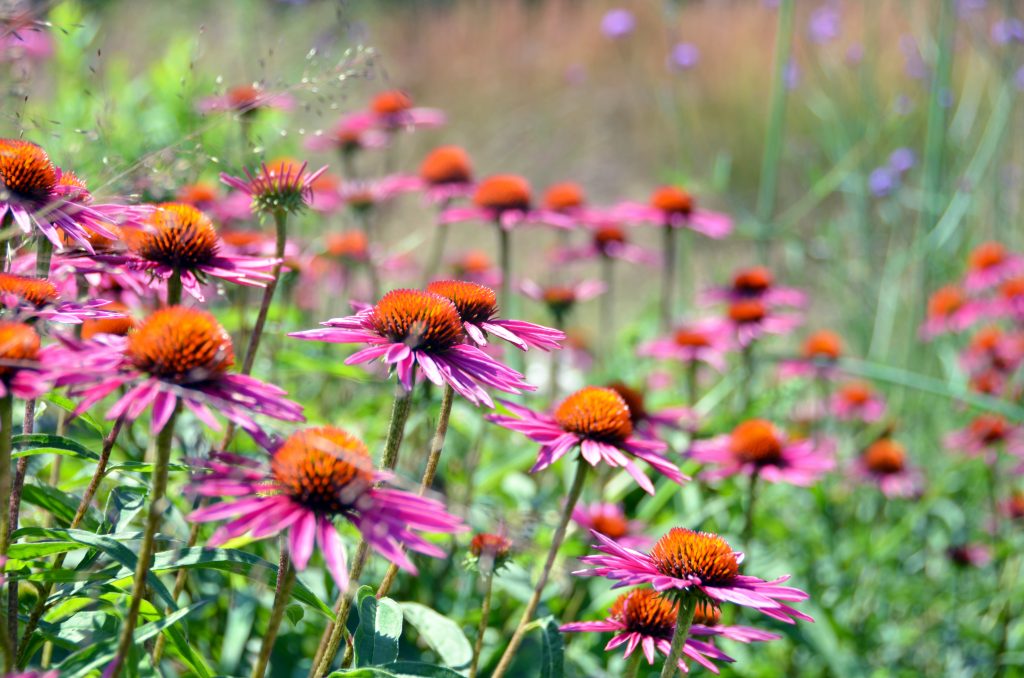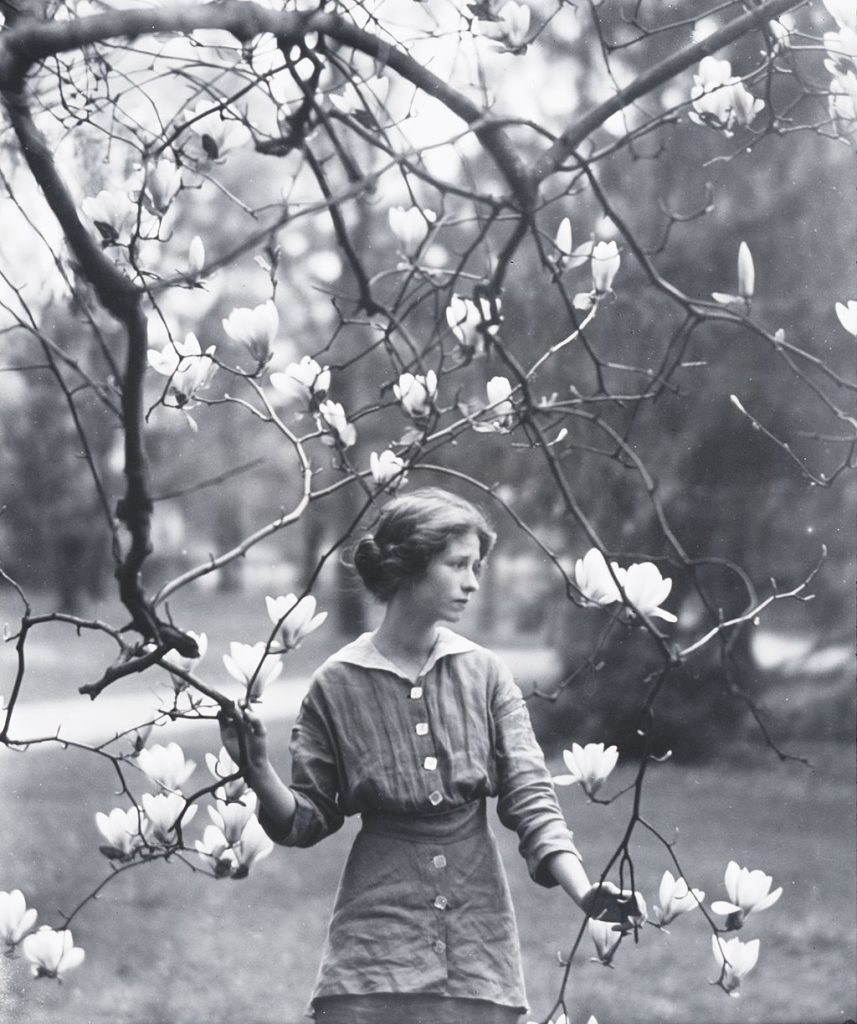If you’ve been dropping by our blog regularly, you’ll know that Syretha, one of our horticulturists, recently posted about her fondness for Ajuga varieties (currently in bloom here at the Gardens), and I have to second that fondness.
Though I have to say, as an herbalist, I’m definitely biased; any plant regularly dismissed as an invader or a common weed, well, I’m bound and determined to discover a use for, herbal or otherwise.

It just so happens that Ajuga (Ajuga reptans) has long secured a place in the herbal tradition. Among the common names for Ajuga, “Bugle” might be the most well-known, though perhaps “Carpenter’s Herb” gives you the best idea as to its traditional use. Although rarely used these days, Ajuga was a common choice, externally applied, to stop bleeding (what we herbalists call an astringent, styptic herb).
In my practice, I have used it this way with quite a bit of success. Usually, I harvest the entire plant as it comes into flower (though I’m always careful to leave plenty for the pollinators), then dry it, and include it in wound-relieving salves and oils.

While Ajuga has historically been used both to arrest internal bleeding and as a heart tonic, it’s too dangerous an herb to experiment with internally. Externally, though, it’s quite safe. In fact, Nicholas Culpeper, a 17th-Century English botanist, herbalist, and physician, had this to say about our common Ajuga: “…if the leaves, bruised and applied, or their juice be used to wash and bathe [the skin], [Ajuga can] cureth the worse sores. [O]utwardly applied, it helpeth those that have broken any bone or have any…out of joint. [A salve made with Ajuga as an ingredient] is so efficacious for all sorts of hurts in the body that none should be without it.”
Intrigued? Stop by the Gardens to identify (though not to harvest…) Ajuga reptans.
– Amy Jirsa, writer/editor


